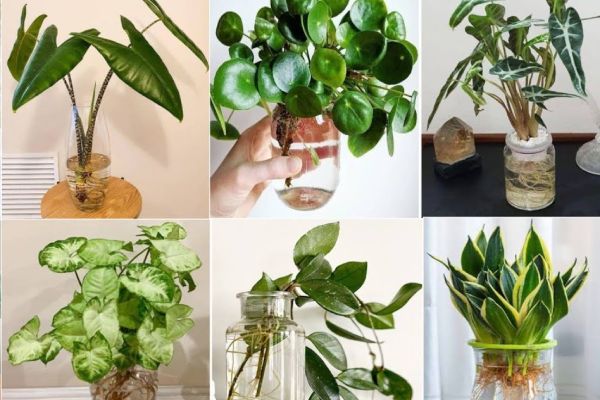If you’re tired of dealing with soil while growing new plants, don’t worry! There are other mediums you can use to grow plants as well. Transplanting plants into the soil can be messy, and it may attract bugs and insects that can harm the plants.
Today, we will discuss the best indoor plants that you can grow in water without soil, along with some growing tips.
Which of the houseplants survive in water?
Hydroponically grown houseplants can survive in watery surroundings due to their ability to absorb nutrients and ample oxygen directly from water. The plant is grown hydroponically, which means it uses less water than the soil-based growing method. Additionally, the root system of the plant is visible so it is easier to monitor its health and growth.
Here are some houseplants which can thrive in a water environment.
Spider Plant
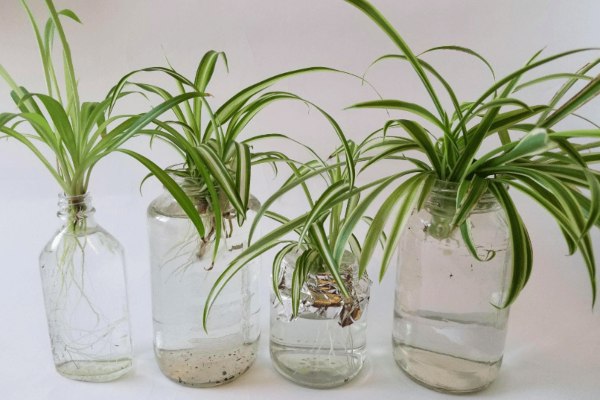
Spider plants are excellent for hanging baskets and water culture. Its specific feature is long, arching leaves that are vibrant, solid green, or feature variegation like yellow or white streaks. It adapts to a variety of environments and is relatively easy to grow in water. It produces small plantlets that can grow quite large in the wild so you can share them with your friends as well. Besides, it is easy to care for.
To hydroponic Spider Plant in your home, follow these general steps:
- First, select a tall, clean glass or transparent container to propagate spider plants. The tall glass will hold enough water to submerge the nodes, while the transparent container will make it easier to monitor root growth.
- Once, you’ve selected your container, cut the spiderettes from the parent plant and place them in the container with water.
- While placing the baby spider plant, make sure that its one or two nodes are submerged in water, as that’s where new roots and growth will start.
- Spider Plants enjoy bright but indirect light. So, you should avoid placing it in direct sunlight.
- You must change the water every 1-2 weeks to prevent stagnation and buildup of algae and bacteria.
Lucky Bamboo
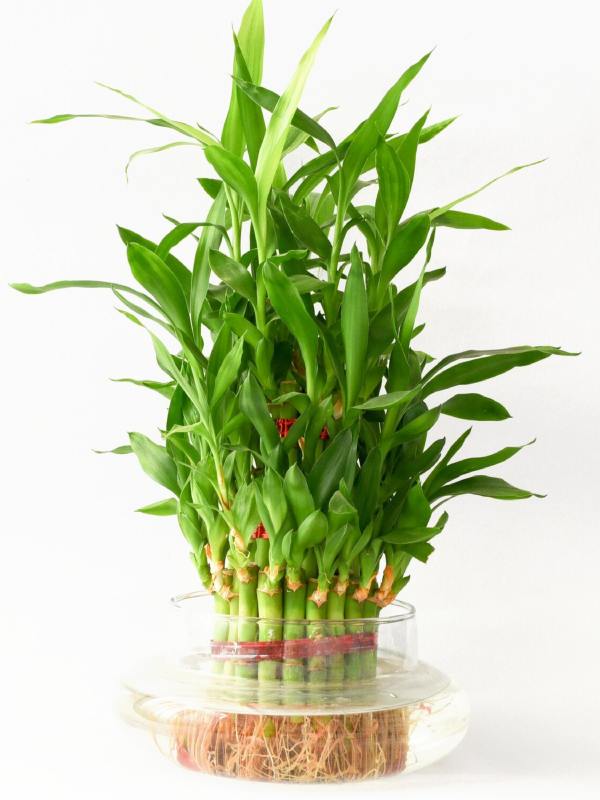
Lucky bamboo belongs to the genus Dracaena sanderiana. Its sophisticated look attracts people’s attention. Besides, Lucky Bamboo is believed to bring luck and prosperity, so most people often keep it in their houses or office spaces.
Here are the general steps to hydroponic Lucky Bamboo in your home:
- Select a tall and transparent container to propagate Lucky Bamboo. Fill the container with clean water to submerge the base of the lucky bamboo stalks.
- You should ensure that the base of the lucky bamboo stalks remains submerged in water at all times.
- It adapts to a temperature range of 65-95°F (18–35°C)
- Lucky Bamboo should be kept in moderate or indirect sunlight.
- If you have cats and dogs in your home then make sure to keep it out of reach from them. It is toxic to animals.
Snake Plant
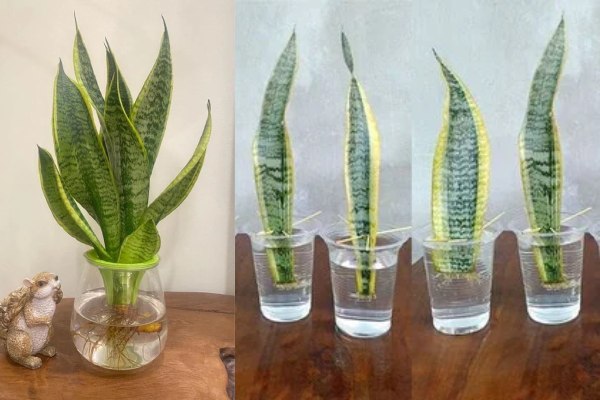
Snake plant features thick, sword-shaped leaves with a unique banded pattern with web-like underground roots. It also produces clusters of cream-colored flowers once a year that form into small orange fruits. There is a spiritual belief that the snake plant brings good luck and provides positivity to the surroundings. Further, it takes a couple of months for the propagation process to root new pups to sprout.
A quick step-by-step snake plant care guide is listed below:
- First, you need to cut one or two leaves from your plant just above the soil with the help of clean pruning shears or scissors.
- After that, divide each leaf cutting, and cut a triangle shape at the bottom, starting from the edges of the cutting.
- Cutting a triangle-shaped snake plant increases the surface area for new roots to grow. Also, it ensures the cutting is orientated properly for rooting.
- Before placing the cutting plant in the water, let it callous or dry out for several days.
- It prefers to grow in partial sun to shade from which its range of color changes from green and gray to gold or a combination.
- Further you need to change the water once every one to two weeks.
- Snake Plants are toxic to both people and animals, so make sure to keep them out of reach from children and pets.
Rosemary
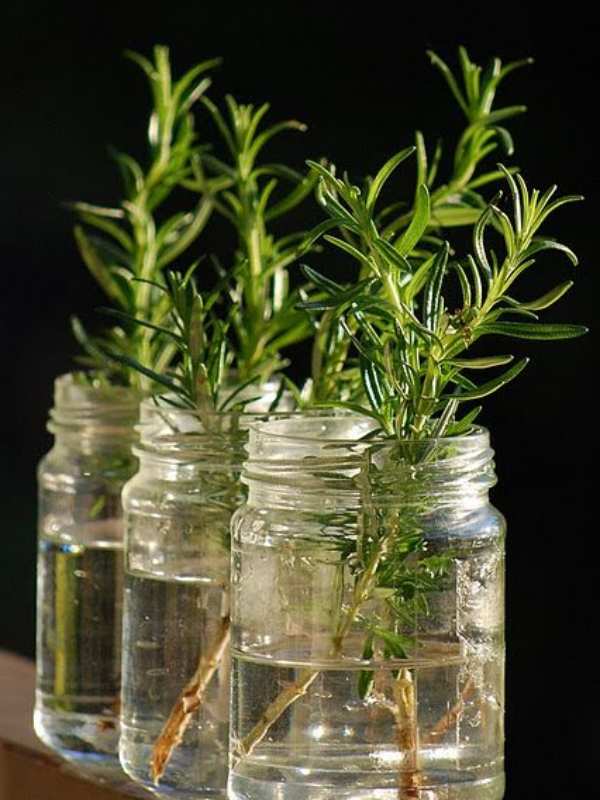
Rosemary, also known as Salvia rosmarinus, is an evergreen shrub. Its special feature is that Rosemary gives fragrance from its needle-like leaves and two-lipped, purplish-blue, and white flowers. Besides, there is the benefit of growing rosemary surrounding your house. It has been used to reduce several physical and mental conditions including headache, dysmenorrhea, stomachache, epilepsy, rheumatic pain, spasms, and more.
Here are some tips on how to grow rosemary in your home:
- First, select a new fresh green shoot and cut it down. Make sure that it shouldn’t be stiff woody stems.
- After that, strip the leaves about 5 cm from your cut stems and submerge the ends in water.
- Following the process, it will take 3-4 weeks to grow new roots.
- Rosemary prefers ample sunlight to thrive as it needs at least six hours of direct sunlight per day.
Peace Lily
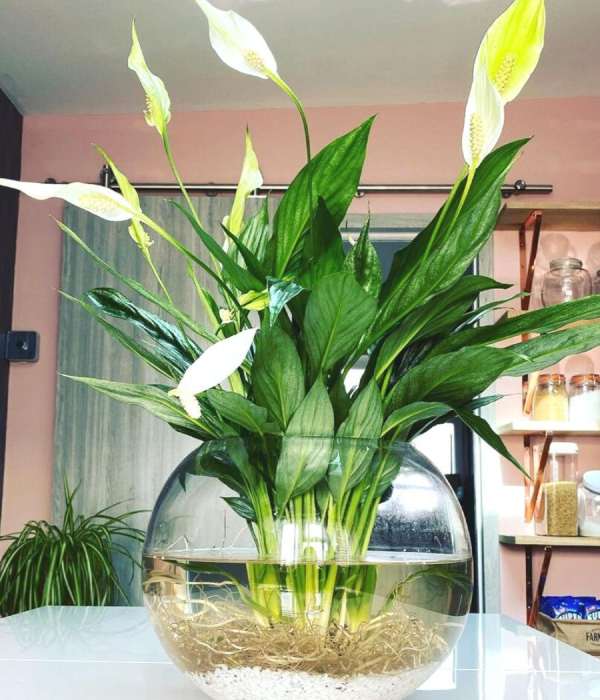
Peace Lily, scientifically known as Spathiphyllum, is an attractive indoor foliage plant renowned for its elegant appearance and air-purifying qualities. It cleanses the air and raises humidity levels for better breathing and sleeping. Peace Lily can bloom twice a year, producing long-lasting flower stalks in spring that float gracefully over the leaves.
Here’s a way to hydroponic a peace lily in water:
- Select a healthy section of the peace lily with roots and submerge the bottom part of the plant in a jar or water container.
- Make sure the roots are fully immersed in the water.
- Peace Lily can survive without sunlight. It uses just bright indoor light from indirect sunlight.
Baby’s Tears
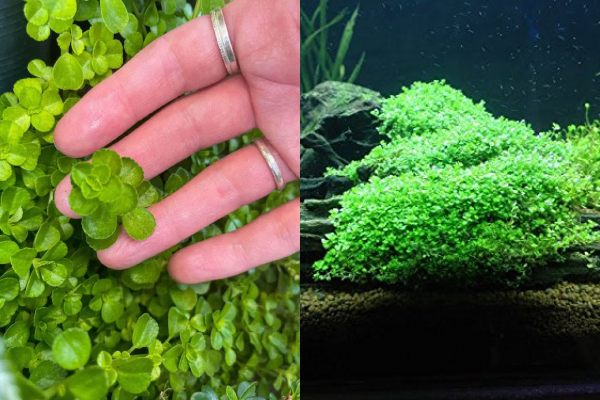
Baby’s Tears, scientifically known as Soleirolia soleirolii, is an easy-care houseplant that thrives in water. It has easy tiny rounded leaves in the wild whose foliage is lime green. However, some varieties have gold or silvery foliage.
To hydroponic Baby’s Tears in your home, follow these general steps:
- Cut the stem just above the node where the new leaf emerges.
- Following the cutting, just place in a water container until new roots emerge.
- Baby’s Tears enjoy bright but indirect light. So, you should avoid placing it in direct sunlight.
Coleus
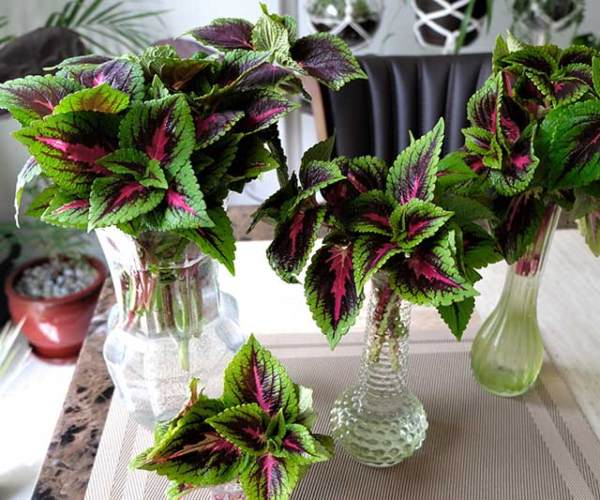
Coleus, formerly known as Coleus blumei, is an attractive and popular choice among gardeners. It is renowned for its vibrant and colorful foliage which has square stems and beautiful oval leaves.
Coleus are easy to propagate and thrive in water. Here are a few tips,
- Cut around a 6-inch stem from the grown plan and remove the leaves from the bottom 4 inches.
- Then, place the stem in a glass or vase filled with water. In a few weeks, you’ll notice roots starting to grow.
- It adapts to both full sun and shade.
Spiderwort
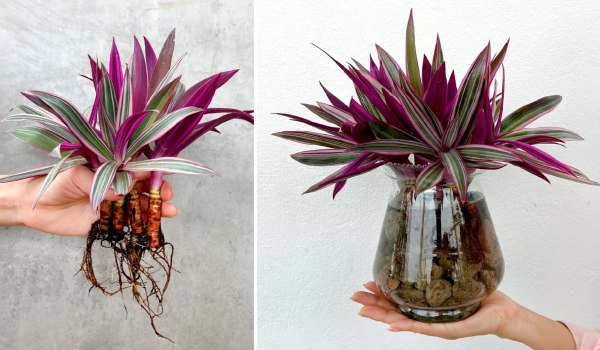
Spiderwort produces bluish-purple flowers that blossom above arching, grasslike leaves. It flourishes during the early daytime from late spring to midsummer.
Here is a quick step to grow these plants in your home garden.
- Cut down the bottom of the stem where the roots are forming.
- Make sure its nodes are submerged in water.
- Once the roots have grown several inches long, add some drops of liquid houseplant fertilizer into the water that gives nutrients.
- After some time, flowers also started to bloom.
Pothos
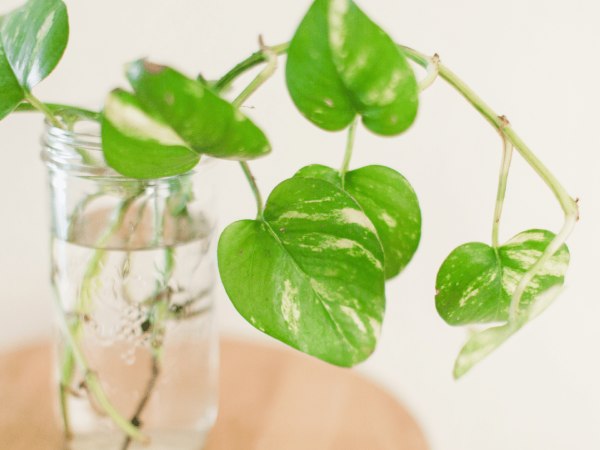
Pothos is one of the common houseplants planted in our surrounding house.
- Firstly, select a long, healthier vine around four inches tall from your already grown Pothos and cut it down just below a node.
- Trimming or cutting Pothos saplings longer have the chance for long-term growth as the plant will have more foliage for better photosynthesis.
- After that, remove all the leaves from the bottom half of the cutting and place the stem inside a glass filled with clean, filtered water.
- Make sure the water should always be above the root line.
- The water needs to change after 4-6 weeks and the glass should be cleaned every couple of months to keep the plant healthy and hygienic.
Philodendron
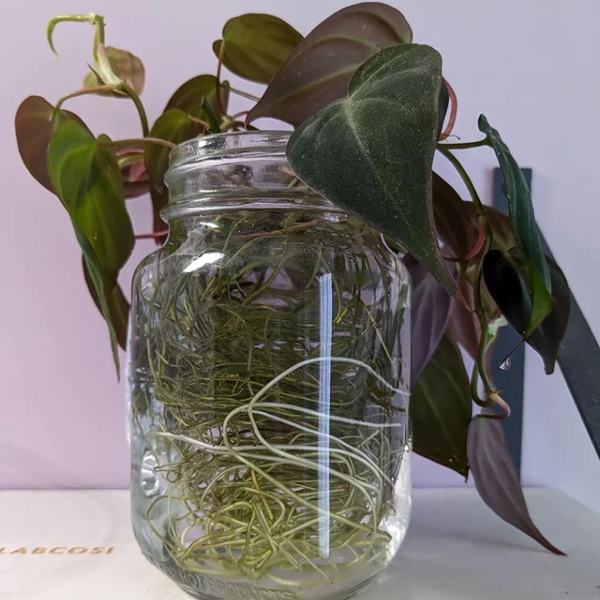
Philodendrons are similar to Pothos which are easy to care for in water. It adapts to various lighting and watering conditions and thrives in water very well. The plants featured large, green, dark leaves which love humid environments.
- Choose vines with large, healthy leaves to ensure quick growth.
- Remove the leaves from the bottom half of the cutting steam.
- Following that keep up the same steps as with the Pothos, moving the plants to a larger glass or container filled with clean, filtered water.
- Need to change the water once every four to six weeks.
Frequently Asked Questions
1. Are houseplants that thrive in water easy to care for?
The plant is grown hydroponically, which means it uses less water than the soil-based growing method. Additionally, the root system of the plant is visible so it is easier to monitor its health and growth.
2. What’s the difference between soil-grown plants and hydroponically-grown plants?
Transplanting plants into the soil can be messy, and it may attract bugs and insects that can harm the plants. On the other hand, hydroponically grown plants consume less time to cultivate, and save water, significantly less water than soil-based farming.
3. Do hydroponic plants grow faster than soil?
Yes, hydroponic plants grow faster than soil. The plants that grow in the water get more light and nutrients than they would get in the soil. In the soil method, the roots grow outwards and downwards into the earth because of which it cannot provide consistent moisture levels and oxygenation to plant roots.
Also read, Propagate Fiddle-Leaf Figs in Water or Soil
